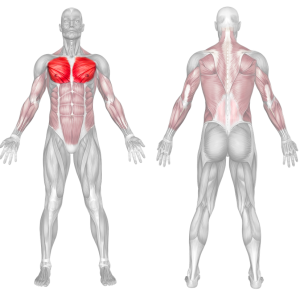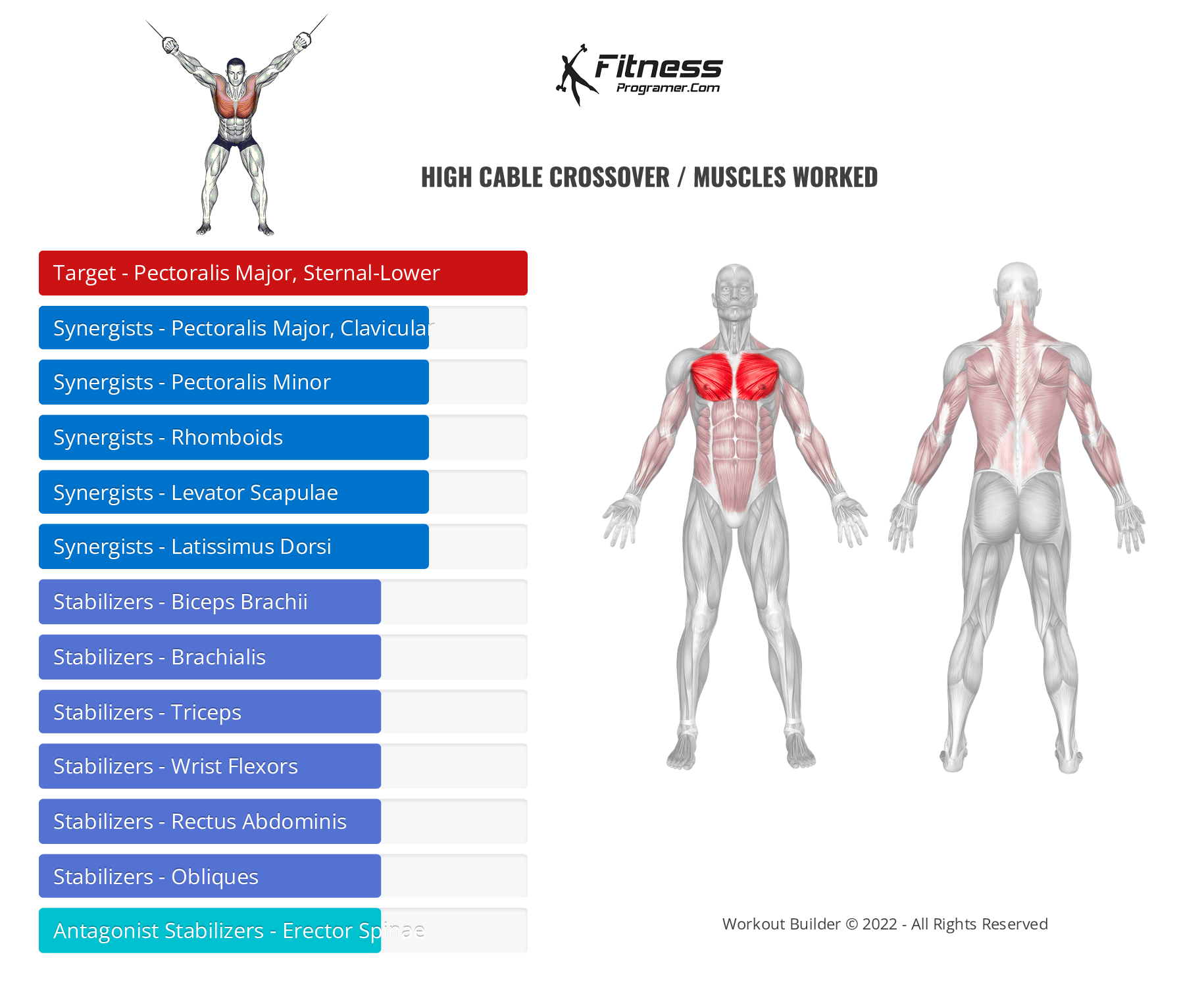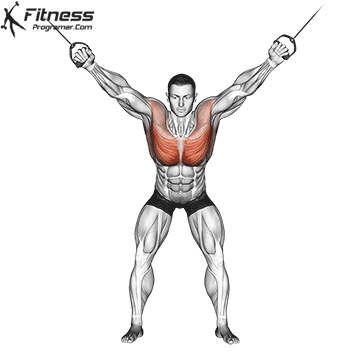High Cable Crossover Overview
High cable crossover is a cable exercise that targets the chest muscles. It involves using a cable machine with the pulleys set to the highest position and crossing the arms in front of the body at the end of the movement. This move targets the pecs, specifically the lower, inner and outer areas, while also working the shoulders and triceps as secondary muscles.
How To Do:
- Adjust the cables: Adjust the cables to the highest position on both sides of the cable machine. Attach the handles to each cable.
- Stand in the center: Stand in the center of the machine, facing away from it. Hold the handles with your palms facing down.
- Position yourself: Take a step forward with one leg or lean forward slightly, keeping your feet shoulder-width apart. Your arms should be extended out to your sides, parallel to the floor.
- Cross the handles: Slowly bring both handles towards each other, crossing them in front of your body. Your arms should be slightly bent at the elbow.
- Squeeze your chest: Pause for a moment and squeeze your chest muscles.
- Return to the starting position: Slowly lower the handles back to the starting position, keeping your arms slightly bent.
- Repeat: Repeat the exercise for the desired number of repetitions.
Coach Tips:
- Keep your feet firmly planted on the ground throughout the exercise to maintain stability.
- Focus on contracting your chest muscles as you bring the handles together.
- Keep your arms slightly bent to avoid locking out your elbows and to maintain tension in your muscles.
High Cable Crossover Benefits
1. Enhanced Chest Definition:
The high cable crossover is an excellent exercise for chest development, as it stretches the chest muscles and increases range of motion. The exercise works the lower, inner, and outer areas of the pecs, which helps achieve a well-rounded chest workout and build overall chest strength. By targeting these different areas, you can also correct any muscle imbalances that may exist, resulting in a symmetrical and defined chest.
2. More muscle activation:
The tension in the cable provides a softer and more continuous resistance than free weights that can be affected by momentum. This constant resistance triggers the work of many small stabilizing muscles in the chest in addition to the pectoral muscles, resulting in greater muscle activation and development.
3. Increased Range of Motion:
The high cable crossover also provides an excellent stretch of the chest muscles, which is important for muscle growth and flexibility. The stretch of the chest muscles increases the range of motion and helps to improve overall posture.
High Cable Crossover / Muscles worked

How can you incorporate the high cable crossover into your workouts?
- Warm-up: Start your chest workout with a proper warm-up to avoid injuries. You can do some light cardio or dynamic stretching.
- Compound exercises: Begin your chest workout with compound exercises such as bench press, push-ups or dips. These exercises work multiple muscle groups, including the chest muscles, and help to build overall chest strength.
- High cable crossover: After completing compound exercises, you can move on to the high cable crossover. Use a weight that challenges you but still allows you to perform the exercise with proper form. Aim for 3-4 sets of 10-12 reps.
- Variation: To target different areas of your chest, you can vary the height of the cables. Higher cables will emphasize the lower chest, while lower cables will target the upper chest.
- Supersets: To intensify your workout, you can add supersets by pairing the high cable crossover with another exercise, such as push-ups or incline dumbbell press. This will increase the time under tension and help to stimulate muscle growth.
- Progressive overload: To continue making progress, gradually increase the weight and reps of your high cable crossover. This will challenge your muscles and help them to grow.
- Cool-down: After finishing your chest workout, cool down with some light stretching to reduce muscle soreness and improve flexibility.
By incorporating the high cable crossover into your chest workout, you can target different areas of your chest, increase your range of motion, and build overall chest strength. Remember to perform the exercise with proper form, gradually increase the weight and reps, and always warm up and cool down properly.


